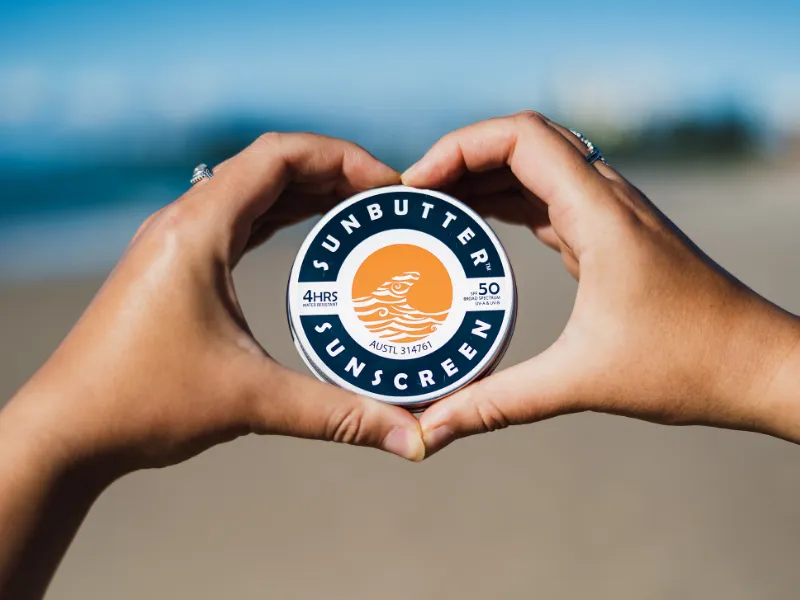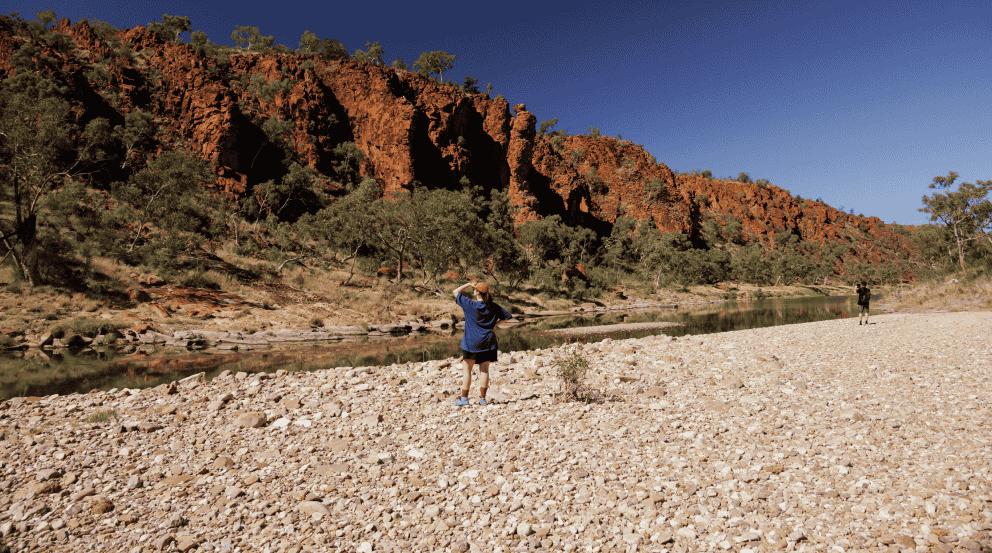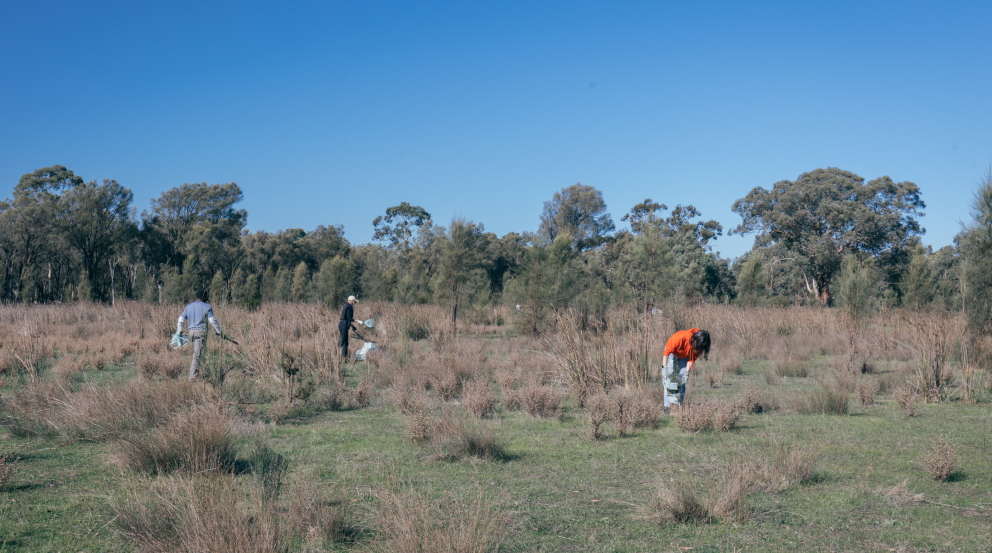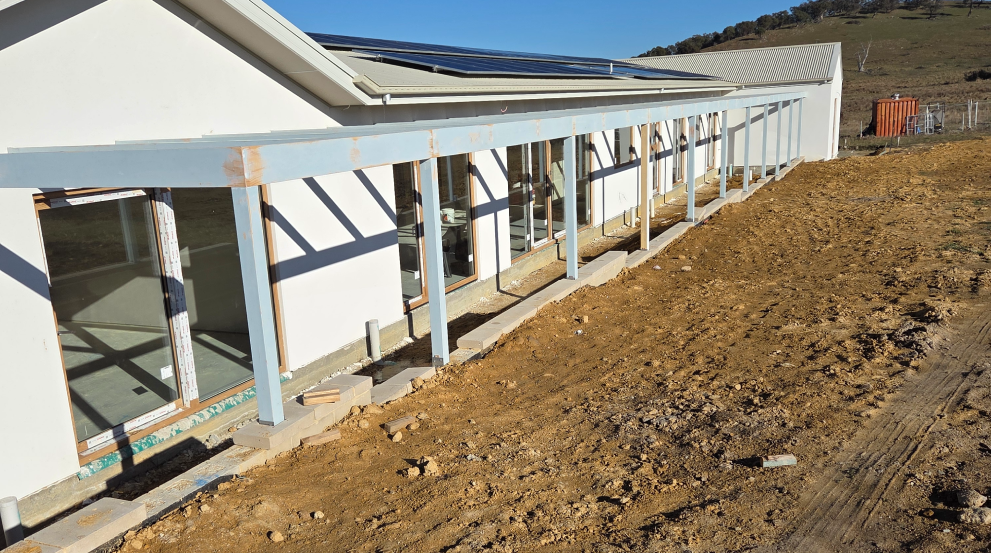While sunscreen is one of the most common household goods in Australia, many major brands contain ingredients that are detrimental to our oceans, and almost all are packaged in single-use plastic. That’s why Tom and Sacha, founders of Sunbutter, started making their own.
Did you know that not all sunscreens are created equal? (Or good?)
While some claim to keep you covered and ‘burn free’, they’re packaged in non-recyclable plastic and contain ingredients that are harmful to fish and reefs.
For Tom Hiney and Sacha Guggenheimer, a conservation ecologist and marine biologist duo, that simply wasn’t good enough.
The couple met while working on West Australia’s Ningaloo Reef in 2016. Every day before going out diving with whale sharks, they’d slather on reef-safe sunscreen but both felt conflicted about it. All the sunscreens they’d come across was packaged in non-recyclable plastic.
“We thought, ‘This is pretty daft’,” Tom says. “On one hand you’re protecting the reef by buying reef-safe sunscreen, but you’re buying single-use plastic that can’t be recycled.”
So they decided to make their own.

Tom and Sacha are co-founders of Sunbutter, Australia’s first certified vegan, cruelty-free, and plastic-packaging free sunscreen.
They’ve been in business since June 2019, and people are already loving their product.
But making your own sunscreen isn’t at easy at it sounds. When Australians are spending so much time in the sun, and with the country’s high rates of skin cancer, it’s important that the industry is tightly monitored. “When such a huge proportion of the population is using sunscreen, and needing its benefits so intensely, it’s really good and really necessary that that the government regulates the production of sunscreen so strictly,” says Tom.
In Australia, sunscreen is classed as a medicine, and giving it an SPF claim means it needs to be manufactured in a Therapeutic Goods Administration-approved facility. In order to be able to claim an SPF rating, Tom sent their sunscreen to a lab, paying ‘an extortionate fee’ to get their handmade product tested.
“We needed to make sure it was actually working, and that we didn’t just think it was working because we loved it!” Tom explains. “It came back with an SPF of 25+.”
After that, Sunbutter started working with an approved manufacturer to make it vegan, reef-safe, and cruelty free. They made sure they looked at the research and chose ingredients that weren’t going to be damaging to coral reefs, seagrass beds, kelp forests, and marine life. And then they started packaging their sunscreen in reusable screw top tins that can be easily repurposed into storing other things. “We get loads of great feedback from customers who are filling them with spices or ground coffee for camping trips, making their own lip balms, or storing soap or shampoo bars,” Tom says.

Tom and Sacha switched their personal banking over to Bank Australia about a year ago, and Sunbutter became a business customer in April 2020.
“They complement our ethics and ethos really nicely,” Tom says. “We put the environment at the forefront of everything we do at Sunbutter, so it made sense to switch our banking away from the Big Four.”
The Sunbutter team also love that Bank Australia are carbon neutral, and that they’re actively working to reforest land and provide funding to charitable organisations who really need it. “It just aligned with our company philosophies to be banking with Bank Australia.”
And the feel-good Sunbutter vibes don’t stop with the product, either. “Our business is carbon neutral,” Tom says, “We’re 1% for Planet members. And we give 10% of our profits to our charitable partners.”
They’ve even established an emergency fund that can be donated to wildlife, conservation and environment charities as needed, and gave “quite a lot” of money to bushfire wildlife charities during the catastrophic bushfire season of 2019/20. “It’s a real pleasure to run a business that lets you give money away to great causes,” says Tom.








